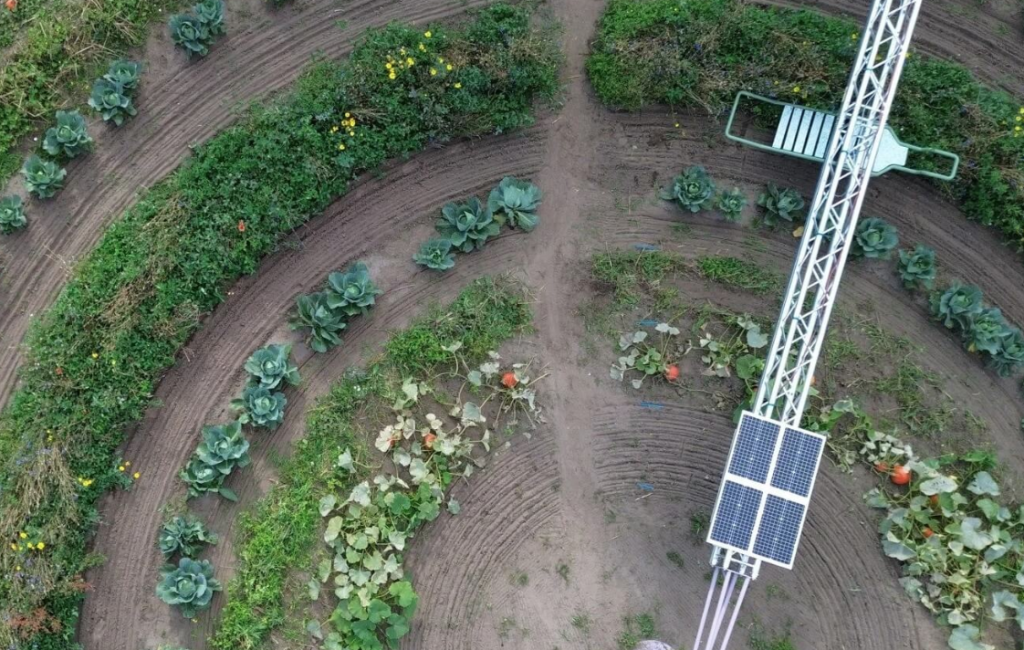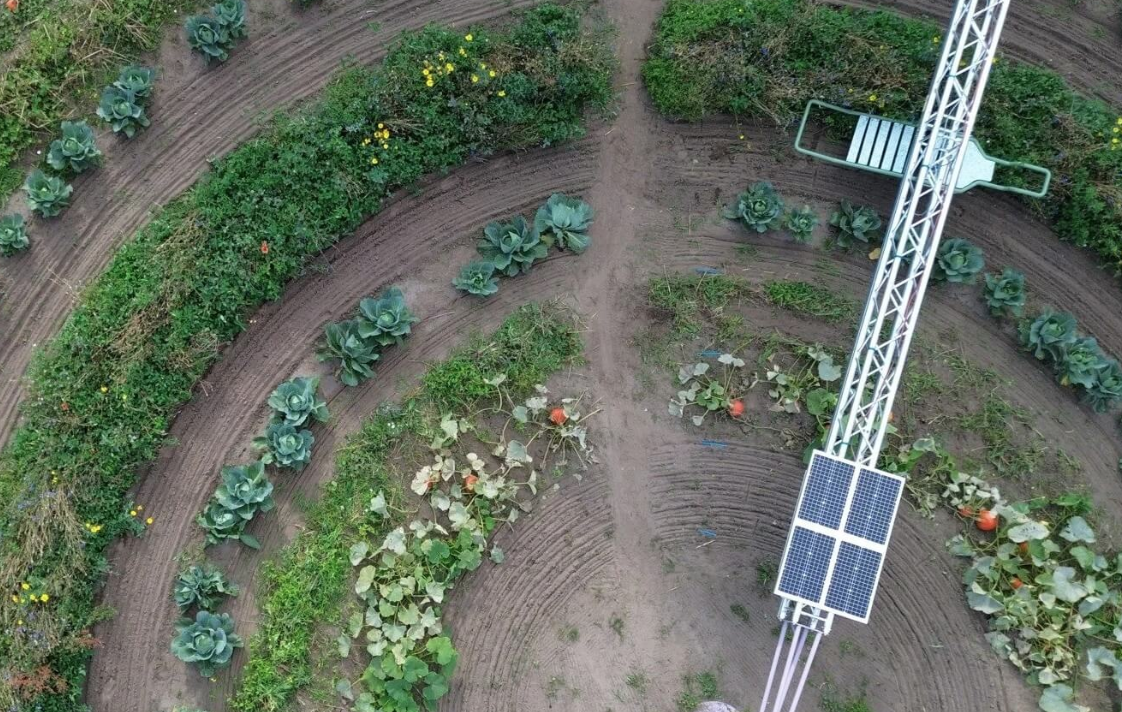In the next wave of regenerative agriculture, the farm is no longer a grid of efficiency but a living circle—with the human spirit at its core. Instead of replacing the farmer, AI and robotics now orbit like silent companions, extending our hands rather than erasing them. A rotating robotic arm moves through the plot not as a master, but as an assistant, guided by ecological intelligence and human intuition. This is not automation for profit—it’s a return to sacred design, where technology becomes humble, circular, and in service to the soil, the grower, and the wider web of life.
The post Regenerative circling faming with man, AI, robots and solar power appeared first on Green Prophet.
In the next wave of regenerative agriculture, the farm is no longer a grid of efficiency but a living circle—with the human spirit at its core. Instead of replacing the farmer, AI and robotics now orbit like silent companions, extending our hands rather than erasing them. A rotating robotic arm moves through the plot not as a master, but as an assistant, guided by ecological intelligence and human intuition. This is not automation for profit—it’s a return to sacred design, where technology becomes humble, circular, and in service to the soil, the grower, and the wider web of life.
During Covid, when the world lost its bearings and I feared the global food distribution system would snap like a dry twig, I did the only sensible thing a mother could do: I built a garden. Not a Pinterest garden, but a functional, wartime-style victory garden (download the original here), a mashup of raised Middle Eastern circular plant beds with permaculture herbs spiraling from the center, borrowing wisdom from desert farmers and American agricultural resilience manuals from the 1940s. We planted beans, cucumbers, tomatoes, molokhia (it grows faster than hemp), lettuce, zucchinis, melons and more.
The reward wasn’t just food security — it was witnessing life return. Birds began swooping low to take a peek and eat bugs during the day, chasing the pollinators that came to kiss the flowers. A watermelon I planted was one day the size of an egg and then ballooned into a full, striped universe almost overnight, as if showing me how quickly life responds when humans step back and design with respect. Life happens!
Floris Schoonderbeek
Now, in a strange and beautiful echo of my inherited Dutch farming ancestry, a Dutch industrial designer, Floris Schoonderbeek, is proposing a new way to farm — in circles, not squares. They call it Circle Farming, an invention that I see it as a technological reverence for something ancient. Farming in circles in the Middle East isn’t new. Look from above and you will see circular crops irrigated in Libyan deserts.
Pivot irrigation is used in California and Libya but the scale of farming takes out the “man” in the center
The Al Khufrah Oasis in southeastern Libya, near the Egyptian border (photo above is from 2004), is one of the country’s largest agricultural developments and a distinct geometric landmark of pivot irrigation is easily spotted by astronauts aboard the International Space Station. Since only about 2 percent of Libya’s land receives enough rainfall for farming, the project relies entirely on fossil water pumped from a deep underground aquifer. In tandem, the Libyan government launched the Great Man-Made River project to transport these groundwater reserves to the coast to support population growth and industrial expansion.
Today, parts of the system are still functioning, but years of conflict. the death of Gaddafi, and lack of maintenance have reduced its reliability. While water continues to reach some agricultural and urban areas, the original vision of full capacity and expansion has largely stalled.
Circle Farming founder enjoying his work on the farm without breaking his back
But the Dutch, famous for stubbornly living and growing on land that is supposed to be emerged are updating the instead of plowing rectangles with tractors, a robotic arm is fixed at the center of a 30-meter circle. It moves slowly, like a clock hand made of steel, pulling familiar agricultural tools behind it — for weeding, watering, even harvesting — except now without carving brutal tire tracks through the earth. The land between circles is left untouched — a commons for insects, wildflowers, birds, even humans to linger. Farming becomes a woven pattern instead of an industrial grid.
Each circular strip holds a different crop, creating a precision-farming mandala that’s both productive and biodiverse. Sensors and AI whisper data back to the farmer — moisture here, pest pressure there — giving advice like an oracle rather than a command chain.
Workers aren’t expected to bend and break their spines in the fields. Instead, they lie belly-down on suspended beds attached to the rotating arm, gliding over the crops with dignity — hovering like dragonflies as they weed, prune, harvest by hand. It turns farming from grunt labor into something closer to communion with the land.
This model is being designed for small peri-urban farms, the exact kind of places that struggle to compete with industrial agriculture but carry the soul of food sovereignty. It’s automation not as replacement, but as companion. A bridge for urban people longing for meaningful work, who might rather float over lettuce than sit under fluorescent lights answering emails for a salary that buys them tasteless tomatoes.
This is the new agricultural aesthetic: not tech versus nature, but tech in service to a more intelligent form of nature-culture. Circular design — which ancient farmers, Bedouins, and mothers like me already knew — is returning, this time with robotics and AI strapped in for the ride. What happens when farming becomes beautiful again? When robots don’t dominate, but make room for birds, wildflowers, kids, rest, and wonder?
Greenhouse farming which allows the farmer to adjust micro-specific conditions to the plant is a market dominated by Dutch and Israeli technology. Will the Dutch own regenerative farming? Given the history of farming and efficiency in both of these countries, it will be technology that will be available to all of humanity.
Read up on the history of Dutch irrigation farming
In Israel: Simcha Blass and the perfection of modern drip irrigation in Israel
The post Regenerative circling faming with man, AI, robots and solar power appeared first on Green Prophet.




